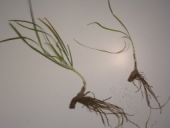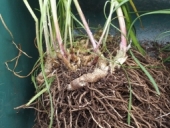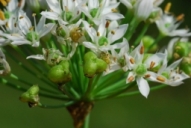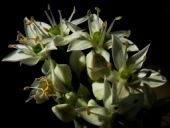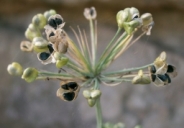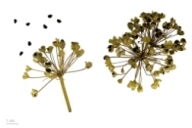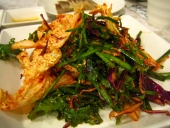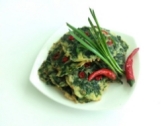| Garlic chives - Allium tuberosum | |||||||||||||||||||||||||||
|---|---|---|---|---|---|---|---|---|---|---|---|---|---|---|---|---|---|---|---|---|---|---|---|---|---|---|---|
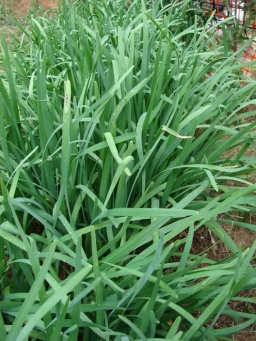 Fig. 1  Allium tuberosum garlic chives, Chinese chives. Habit 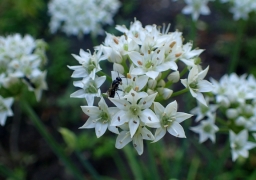 Fig 2  Flower with pollinator Warsaw University Botanical Garden 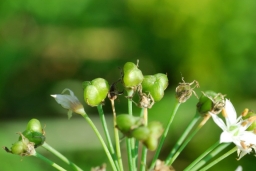 Fig. 3  Young fruit 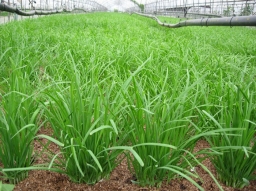 Fig. 4  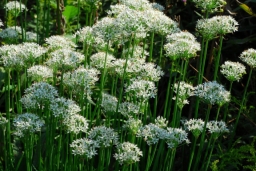 Fig. 16  Inflorescences 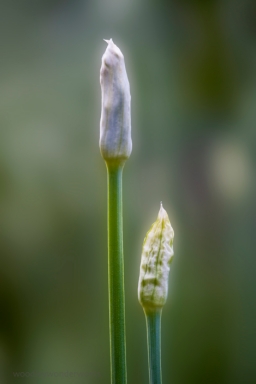 Fig. 17  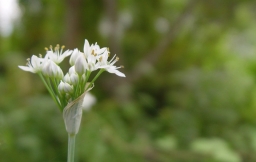 Fig. 18  A tiny bouquet 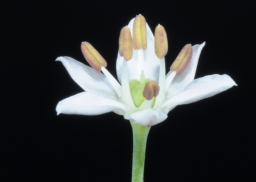 Fig. 19  Close-up 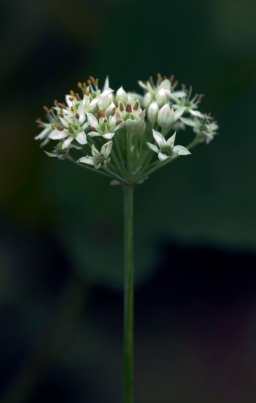 Fig. 20  Flowers opening  Fig. 21  Cut garlic chives  Fig. 22  Chinese flowering chives (韭菜) garlic chive flowers, 日本語: ハナニラ (花韮) ไทย: ดอกกุยช่าย Fig. 23  Garlic chives (A. tuberosum) that have not been exposed to light for few days  Fig. 26  Flowerpot with Garlic Chives Vincent van Gogh, 1887 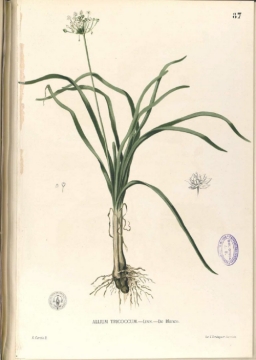 Fig. 27  A. tuberosum Rottler ex Sprengel M. Blanco, 1875 | Scientific
name Allium tuberosum Rottler ex Sprengel Common names English: blanched leak, Chinese chive, Chinese leek, flowering Chinese chive, flowering Chinese leek, flat chives, flowering leek, garlic chives, oriental chive, oriental garlic, white chives, yellow Chinese chive; China: gau tsoi, gau tsoi fa, gow choy, jiu cai, jiu tsai, jiu tsung, nin hua, gau tsoi fa, jiu choy, kau tsoi, kucai; Indonesia: kucai; Japan: nira, nira no hana; Korea: buchu; Malaysia: bawang kucai, kuchai; Philippines: amput, ganda, imayyaw, kutsay, kutsay bulaklak; Thailand: dok kui chaai, gui chai, hom paen, kok gui chai, kui chaai, kuichai; Vietnam: bong he, he 1,2,7 Synonyms A. angulosum Lour., A. argyi H. Lév., A. chinense Maxim., A. clarkei Hook. f., A. odorumI, A. roxburghii Kunth, A. sulvia Buch.-Ham. ex D. Don, A. tricoccum Blanco, A. tuberosum Roxb., A. tuberosum f. yezoense (Nakai) M. Hiroe, A. uliginosum G. Don, A. yezoense Nakai, Nothoscordum sulvia (Buch.-Ham. ex D. Don) Kunth 2,6 Relatives Leek, A. ampeloprasum; onion, bulbing onion, A. cepa; scallion, green onion, bunching onion, ciboule, A. fistulosum; giant onion, A. giganteum; garlic, softneck garlic, hardneck garlic, rocambole, A. sativum; chive, cive, A. schoenoprasum 5 Family Liliaceae (Amaryllidaceae) Origin SE Asia 5 USDA hardiness zones 4-8 5 Uses Fresh culinary herb; 2 landscape: ornamental, border Height 12-18 in. (30-45 cm) 2 Spread Dense clumps Plant habit Fast growing; monocot 5 Life cycle Perennial Pruning requirement Divide every 3-4 years 5 Leaves Leaves 4-6 (-8); linear, 0.04-0.16 in. (1-4 mm) broad, not fistular, shorter than the scape 3 Bulbs Cylindrical; 1.5-2.5 in. (4-6 cm) long, light brown, erect; borne on stout, horizontal rhizome 3 Flowers Summer Seed Planting season Spring, early summer 7 Soil tolerance Wide range 2 Light requirement Full sun to part shade Water requirement Drought tolerant; thrives with irrigation Flood tolerance Well drained Roots Bulb: cylindrical, 1.5-2.5 in. (4-6 cm) long, light brown, erect; outer coat reticulate fibrous 3 Invasive potential * None reported Reading Material Garlic Chives, Allium tuberosum, University of Wisconsin-Madison Allium tuberosum, Floridata Origin/Distribution Garlic chives have been cultivated in China for 3,000 years. 4 Ranges over east Asia from Mongolia in north to Philippines in south, and Japan in east to Thailand in west, but because it is naturalized easily following escape from cultivation, the center of origin is not clear. 4 Allium tuberosum is cultivated in China, Siberia, and North America, and is reported to be established in New England. 3
Fig. 5. 609 georeferenced records Description The specific epithet tuberosum means tuberous. Garlic chives is an allium grown for its leaves, and not its little bulb. 5 All parts of the plant have a mild garlic flavor, and like common chives, Chinese chives are mainly used as a fresh culinary herb. 2 Garlic chives grow in dense clumps formed of basal rosettes of 2–8 narrow leaves. 3 The plants live for many years, developing large spreading rhizomes. 2 Chinese chives have a long history of cultivation for culinary and medicinal use. 2
Leaves Solid (rather than hollow, as in the related chives, A. schoenoprasum) and flattened. 4 Flowers Umbels: dense flowered. Pedicels: filiform, 1-1.5 cm long. Tepals elliptic, white to pink, c. 6 mm long, apex acute to acuminate. Filaments shorter than the tepals, entire, inner broader, narrowly triangular. 3 The fragrant, star-shaped flowers grow in open umbels, up to 5 cm across, which bloom in the summer or early fall, later than many other Allium species. The flowers do not produce bulbils or aerial bulblets, but instead produce small capsules with seeds. 4 The flowering stems (scapes) are also solid and sharply angled. The plant forms small or elongated bulbs attached by short rhizomes. 4 Varieties Chinese chives are usually divided into leafy and flowering types, although most current cultivars are dual purpose. Three horticultural products are derived from A. tuberosum: the green and blanched leaves and the closed flower buds. In addition, the bulbs may be harvested and used like garlic. 2 Several cultivars are available in Asia, including some grown for the flower stalks. 5 • Broad leaved nira: Japanese variety of Chinese leek (nira), deep green, broad, thick leaves, also referred to as flat chives, heat and cold tolerant, full sun, thrives in half shade. Can also be used to grow the delicate yellow blanched Chinese leek. 7 • Flowering Chinese leek: grown for its young flower buds, long stems and slender flat deep-green blades. All of these parts are edible including mature flowers and have a delicate garlic onion flavor. This variety is suitable for harvest from mid spring to early fall when grown in a greenhouse, and from late spring to late fall when grown in the field. Sufficient vegetative growth (1-2 years) plus low temperatures in winter and long summer days are needed for flowering. Generally, Chinese leek will not flower in the first growing season. 7 Harvesting Harvest by cutting just above ground level. 7 Limited harvesting is done during the first year's growth so that reserves build up in the roots. 2 Blanching, or growing the chives in the dark produces a higher value product with soft, yellow leaves and a more subtle garlic flavor. 2 Only strong plants should be grown in this manner. 7 Storage Green chives are be stored at least two weeks at low temperatures (Zong and Cantwell unpubl.). Blanched Chinese chives are higher respiring and more perishable than the green leaves, and shelf-life is <5 days. Both green and blanched chives are packed in waxed boxes containing 5 to 10 kilos of product. They may be vacuum-cooled, air-cooled or ice-cooled. A paper liner used inside the boxes may result in heat build up, especially if the product has not been precooled and the box has little venting. Flower buds are bunched and banded and shipped vertically in single layer trays or packed horizontally in boxes used for the leaves. 2 Propagation Propagate by seed or by dividing the clumps. 5 The tough, fibrous bulb is elongate and originates from a stout rhizome (underground stem). 5
Seed
Seed Storage Short viability; for best germination, seed should be stored at 41 °F (5 °C) until planted. 7 Sowing/Planting Direct sow seeds in spring/early summer. If transplanting, do so when 5-6 leaves appear. 7 Planting If transplanting, do so when 5-6 leaves appear. 7 Days to Maturity Approximately 70-100 plus 7 Sowing depth ¼-½ in. (5-10 mm) 7 Seed Spacing ½ in. (10 mm) 7 Germination Temperature 60-70 °F (16-21 °C) 7 Culture As a commercial crop they are grown in beds as a semi-permanent crop for 4 to 5 years, and are intercropped with quick growing leafy greens. 2 Typically, a green chive production cycle is alternated with a blanched chive production cycle under favorable growing conditions. Under slower growing conditions, only one or two cuttings of blanched chives per year will be taken as it weakens the plant. After harvesting green leaves, resprouting plants are covered with clay pots, or commercially, with plastic films, straw mulches or earth. 2 Food Uses Leaves: are used as a culinary herb, similar to chives but with a more pronounced garlic flavor. 4 Very popular in Asian cooking. Use in soups, stir-fries, tempura, dumplings and salads. Excellent in egg and meat dishes. 7 Young flowers: soups, stir-fries, tempura, dumplings, and salads. Excellent in egg dishes. Flowers are used as an edible garnish with dishes like sashimi. 7 Seeds: can also be eaten. 4
Fig. 24. Buchu-kimchi (garlic chive kimchi) Fig. 25. Buchujeon (garlic chive pancake) Medicinal Properties ** Garlic chives produce sulfur compounds (including methyl sulfides and disulfides) similar to those found in garlic, but in much smaller amounts. They are considered to have similar medicinal properties (antifungal, antimicrobial, anticancer, improving circulation, etc.), but are not as widely used due to the lower amounts. 4 Chive seed is described as medicinal in the “Ben Cao Gang Mu” by Li Shi Zhen, a famous traditional Chinese Materia Medica written during the late 16th century (Ming dynasty), with uses including combating lumbago and slowing frequent micturition. Extracts of Chinese chive seed are marketed today for its “anti-fatigue, anti-aging, and immune boosting properties” and as an aphrodisiac. 4 Other Uses Garlic chives are often grown as ornamentals for the lovely and fragrant flowers, which attract bees, butterflies, and skippers. 4 General Propagation by Seed Onion Relative Society Garlic, Tulbaghia violacea Further Reading Edible Flowers Vegetable Production Handbook of Florida, University of Florida pdf List of Growers and Vendors | ||||||||||||||||||||||||||
| Bibliography 1 "Allium tuberosum Rottler ex Spreng. Chinese chives." USDA, NRCS, National Plant Data Team, Greensboro, NC 27401-4901 USA, 2019, The PLANTS Database, plants.usda.gov. Accessed 16 Feb. 2020. 2 Cantwell, M., et al. "Chinese chives (Allium tuberosum Rottler ex Sprengel, syn. A. odorum)." Progress in New Crops, Edited by J. Janick, pp. 488-495, 1996, NewCROP™, www.hort.purdue.edu/newcrop/proceedings1996/V3-488.html. Accessed 17 Feb. 2020. 3 "Chinese Chives. Allium tuberosum Rottler ex Spreng." Encyclopedia of Life, via eFloras, 12 Nov. 2008, EOL, (CC BY-NC-SA 3.0), eol.org/pages/1085072/articles. Accessed 17 Feb. 2020. 4 Courteau, Jacqueline. "Chinese Chives. Allium tuberosum Rottler ex Spreng." Encyclopedia of Life, EOL, (CC BY-NC-SA 3.0), eol.org/pages/1085072/articles. Accessed 18 Feb. 2020. 5 Christman, Steve. "Allium tuberosum." Floridata, No. 632, 9 Dec. 2003, floridata.com/plant/632. Accessed 22 Feb. 2020. 6 "Synonyms: Allium tuberosum Rottler ex Spreng." The Plant List (2013). Version 1.1. www.theplantlist.org/tpl1.1/record/kew-296861. Accessed 23 Feb. 2020. 7 "Chinese Leek (Allium tuberosum)." Kitazawa Seed Co. www.kitazawaseed.com/seed_037-153.html. Accessed 23 Feb. 2020. Photographs Fig. 1 Starr, Forest and Kim. "Allium tuberosum (Garlic chives, Chinese chives). Habit. Midway House Sand Island, Midway Atoll, Hawaii." Starr Environmental, no. 080607-7150, 7 June 2008, (CC BY 4.0), www.starrenvironmental.com/images/image/?q=24797655632. Accessed 29 Feb. 2019. Fig. 2 Krzysztof Ziarnek, Kenraiz. "Allium tuberosum in Warsaw University Botanical Garden." Encyclopedia of Life, via Wikimedia Commons, 53850425, 8 Aug. 2016, EOL, (CC BY-SA 3.0), eol.org/media/7771891. Accessed 17 Feb. 2020. Fig. 3 Turner, Steve R. "Allium tuberosum Rottler ex Spreng., Young fruit." Missouri Botanical Garden, 30 Aug. 2016, Tropicos®, (CC BY-NC-SA 3.0), www.tropicos.org/Image/100536737. Accessed 23 Feb. 2020. Fig. 4 경 빈마마. "Garlic chives (Allium tuberosum)." Wikimedia Commons, 9 Feb. 2010, EOL, (CC BY 2.0 KR), commons.wikimedia.org/wiki/File:Allium_tuberosum_2.jpg. Accessed 18 Feb. 2020. Fig. 5 "Allium tuberosum Rottl. ex Spreng. 609 georeferenced records." GBIF Secretariat (2019), GBIF Backbone Taxonomy, GBIF, (CC BY 4.0), doi.org/10.15468/39omei. Accessed 23 Feb. 2020. Fig. 6 Jackson, K. "Allium tuberosum." 13 July 2013, www.growables.org. Fig. 7 Saleem, M. Y. "Allium tuberosum Rottler ex Spreng." Missouri Botanical Garden, via Flora of Pakistan, Tropicos®, (CC BY-NC-ND 3.0), www.tropicos.org/Image/100164392. Accessed 23 Feb. 2020. Fig. 8 Starr, Forest & Kim. "Allium tuberosum. Midway Atoll, 3501 Cannon Ave Water plant Sand Island." Encyclopedia of Life, via Wikimedia Commons, 6145508, 14 June 2008, EOL, (CC BY 3.0), eol.org/media/7771896. Accessed 18 Feb. 2020. Fig. 9 Turner, Steve R. "Allium tuberosum Rottler ex Spreng., Stems and leaves." Missouri Botanical Garden, 30 Aug. 2016, Tropicos®, (CC BY-NC-SA 3.0), www.tropicos.org/Image/100536739. Accessed 23 Feb. 2020. Fig. 10 UnconventionalEmma. "Garlic chives Allium tuberosum." Flickr, 3 Oct. 2015, (CC BY-NC 2.0), www.flickr.com/photos/fluffymuppet/21745583950/. Accessed 23 Feb. 2020. Fig. 11 Eickhoff, David. "Allium tuberosum (habit)." Encyclopedia of Life, via Flickr, 7939365694, 5 Sept. 2012, EOL, (CC BY-NC-SA 2.0), eol.org/media/6776238. Accessed 17 Feb. 2020. Fig. 12 Turner, Steve R. "Allium tuberosum Rottler ex Spreng., Flowers and fruits." Missouri Botanical Garden, 30 Aug. 2016, Tropicos®, (CC BY-NC-SA 3.0), www.tropicos.org/Image/100536743. Accessed 23 Feb. 2020. Fig. 13 Jim417. "Garlic chive flowers." Encyclopedia of Life, via Wikimedia Commons, 27966251, 31 Aug. 2013, EOL, (CC BY 3.0), eol.org/media/7771881. Accessed 17 Feb. 2020. Fig. 14 KENPEI. "Allium tuberosum, Osaka-fu Japan." Encyclopedia of Life, via Wikimedia Commons, 1259842, 8 Oct. 2006, EOL, (CC BY-SA 3.0), eol.org/media/7771865. Accessed 17 Feb. 2020. Fig. 15 Culos, Roger. "Allium tuberosum Rottler ex Spreng. Garlic chives, fruits and seeds." Encyclopedia of Life, via Wikimedia Commons, 30135599, 12 Nov. 2013, EOL, (CC BY-SA 3.0), eol.org/media/7771884. Accessed 17 Feb. 2020. Fig. 16 Turner, Steve R. "Allium tuberosum Rottler ex Spreng., Inflorescences." Missouri Botanical Garden, 30 Aug. 2016, Tropicos®, (CC BY-NC-SA 3.0), www.tropicos.org/Image/100536738. Accessed 23 Feb. 2020. Fig. 17 woodleywonderworks. "Sibling rivalry (Allium tuberosum). There are about to be garlic chives running amok in our garden." Encyclopedia of Life, via Wikimedia Commons, 1134444670, 15 Aug. 2007, EOL, (CC BY 3.0), eol.org/media/7771886. Accessed 16 Feb. 2020. Fig. 18 Shigemi, J. "A Tiny Bouquet." Flickr, 27 Aug. 2013, (CC BY-NC-ND 2.0), www.flickr.com/photos/pen3ya/9612712595/. Accessed 29 Feb. 2020. Fig. 19 Taraxacumseeds. "Close-up of a garlic chives flower." Encyclopedia of Life, via Wikimedia Commons, 22984073, 3 Dec. 2012, EOL, (CC BY 3.0), eol.org/media/7771873. Accessed 17 Feb. 2020. Fig. 20 ikeda, masaki. "Garlic chive." Encyclopedia of Life, via Wikimedia Commons, 4605292, 22 Aug. 2008, EOL, (CC BY-SA 3.0), eol.org/media/7771889. Accessed 17 Feb. 2020. Fig. 21 Robin. "Cut Garlic Chives. " Encyclopedia of Life, via Wikimedia Commons, 13286389, 6 Feb. 2011, EOL, (CC BY-NC 2.0), eol.org/media/7771866. Accessed 17 Feb. 2020. Fig. 22 Slater, Susan. "Chinese flowering chives (韭菜), garlic chive flowers, 日本語: ハナニラ (花韮), ไทย: ดอกกุยช่าย." Encyclopedia of Life, via Wikimedia Commons, 62137182, 21 Dec. 2009, EOL, (CC BY-SA 3.0), eol.org/media/7771905. Accessed 18 Feb. 2020. Fig. 23 Frodesiak, Anna. "Chinese vegetable 016. Unidentified Chinese vegetable in a market in Haikou City, Hainan Province, China. Garlic chives (Allium tuberosum) that have not been exposed to light for few days. Chinese called them Jow Huang." Encyclopedia of Life, via Wikimedia Commons, 17835652, 28 Dec. 2011, EOL, Public Domain, eol.org/media/7771843. Accessed 17 Feb. 2020. Fig. 24 ayustety. "Buchu-kimchi (garlic chive kimchi)." Wikimedia Commons via Flickr, Sept. 15, 2007, (CC BY-SA 2.0), commons.wikimedia.org/w/index.php?curid=3247095. Accessed 7 Apr. 2019. Fig. 25 akdrhWkd. "Buchujeon (garlic chive pancake)." Wikimedia Commons via Pixabay, 14 Jan. 2016, Public domain, commons.wikimedia.org/wiki/File:Buchujeon(garlic_chive_pancake).jpg. Accessed 7 Apr. 2019. Fig. 26 van Gogh, Vincent. "Flowerpot with Garlic Chives." Wikimedia Commons, Van Gogh Museum, 1887, Public domain, commons.wikimedia.org/wiki/File:Bloempot_met_Chinese_bieslook_-_s0183V1962_-_Van_Gogh_Museum.jpg. Accessed 23 Feb. 2020. Fig. 27 Blanco, M. "Allium tuberosum Rottler ex Sprengel Chinese chives, cuchay." Plant Illustrations, Flora de Filipinas, ed. 3, t. 87 (1875), via Wikipedia, plantillustrations.org/species.php?id_species=41570. Accessed 23 Feb. 2020. * UF/IFAS Assessment of Non-native Plants in Florida's Natural Areas ** The information provided above is not intended to be used as a guide for treatment of medical conditions using plants. Published 24 Feb. 2020 KJ | |||||||||||||||||||||||||||


